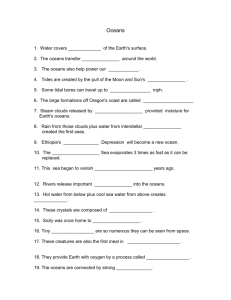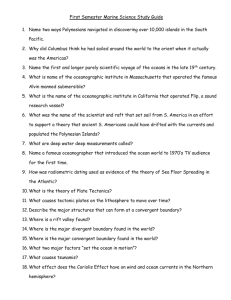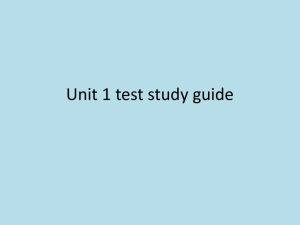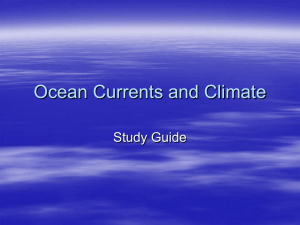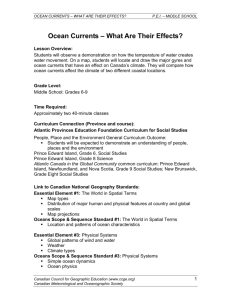File - Science Done Wright
advertisement
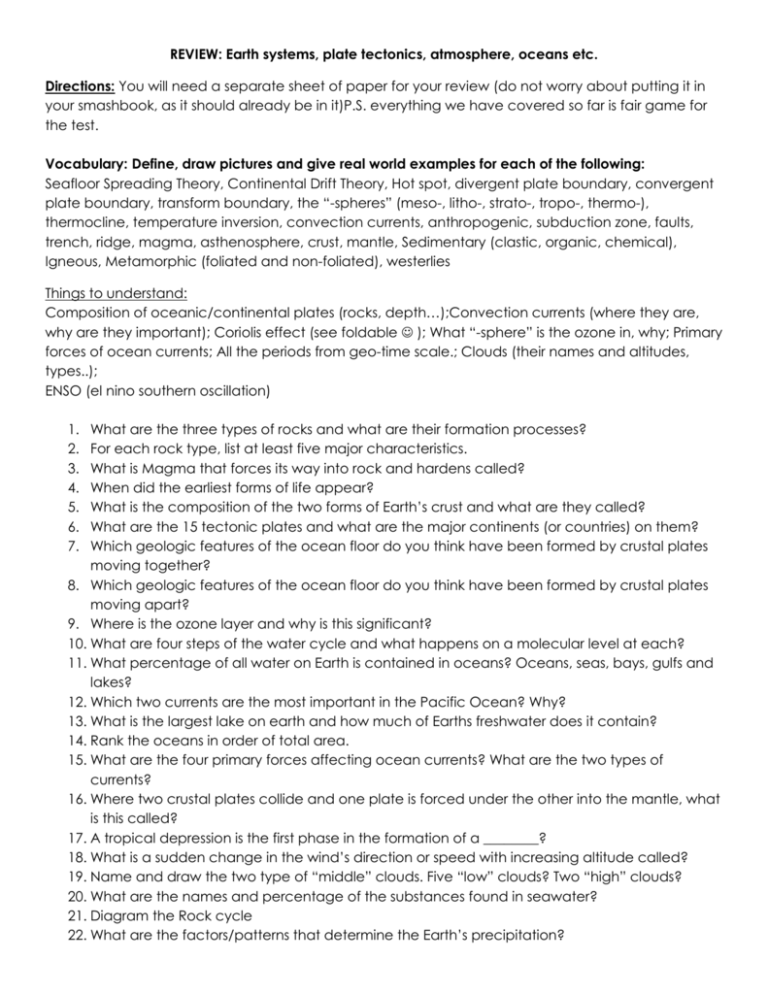
REVIEW: Earth systems, plate tectonics, atmosphere, oceans etc. Directions: You will need a separate sheet of paper for your review (do not worry about putting it in your smashbook, as it should already be in it)P.S. everything we have covered so far is fair game for the test. Vocabulary: Define, draw pictures and give real world examples for each of the following: Seafloor Spreading Theory, Continental Drift Theory, Hot spot, divergent plate boundary, convergent plate boundary, transform boundary, the “-spheres” (meso-, litho-, strato-, tropo-, thermo-), thermocline, temperature inversion, convection currents, anthropogenic, subduction zone, faults, trench, ridge, magma, asthenosphere, crust, mantle, Sedimentary (clastic, organic, chemical), Igneous, Metamorphic (foliated and non-foliated), westerlies Things to understand: Composition of oceanic/continental plates (rocks, depth…);Convection currents (where they are, why are they important); Coriolis effect (see foldable ); What “-sphere” is the ozone in, why; Primary forces of ocean currents; All the periods from geo-time scale.; Clouds (their names and altitudes, types..); ENSO (el nino southern oscillation) 1. 2. 3. 4. 5. 6. 7. What are the three types of rocks and what are their formation processes? For each rock type, list at least five major characteristics. What is Magma that forces its way into rock and hardens called? When did the earliest forms of life appear? What is the composition of the two forms of Earth’s crust and what are they called? What are the 15 tectonic plates and what are the major continents (or countries) on them? Which geologic features of the ocean floor do you think have been formed by crustal plates moving together? 8. Which geologic features of the ocean floor do you think have been formed by crustal plates moving apart? 9. Where is the ozone layer and why is this significant? 10. What are four steps of the water cycle and what happens on a molecular level at each? 11. What percentage of all water on Earth is contained in oceans? Oceans, seas, bays, gulfs and lakes? 12. Which two currents are the most important in the Pacific Ocean? Why? 13. What is the largest lake on earth and how much of Earths freshwater does it contain? 14. Rank the oceans in order of total area. 15. What are the four primary forces affecting ocean currents? What are the two types of currents? 16. Where two crustal plates collide and one plate is forced under the other into the mantle, what is this called? 17. A tropical depression is the first phase in the formation of a ________? 18. What is a sudden change in the wind’s direction or speed with increasing altitude called? 19. Name and draw the two type of “middle” clouds. Five “low” clouds? Two “high” clouds? 20. What are the names and percentage of the substances found in seawater? 21. Diagram the Rock cycle 22. What are the factors/patterns that determine the Earth’s precipitation?



